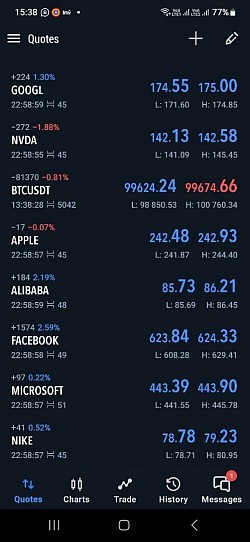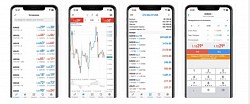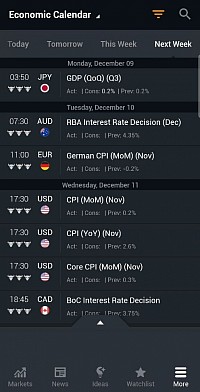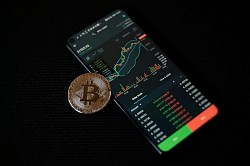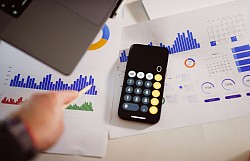Information is wealth
Enhance your trading experience with internationally recognized and reliable trading platforms.
The most reliable trading tools often depend on your strategy, but several have become staples among successful traders. Here are some of the most trusted:
Trading Platforms
*MetaTrader 4/5 (MT4/5): Widely used for forex trading, offering advanced charting tools, indicators, and automated trading capabilities.
*TradingView: A web-based charting platform with social features, real-time data, and an array of technical indicators, favored for its user-friendly interface.
Charting and Technical Analysis Tools
*Trend Lines and Channels: Used to identify trends and key price levels.
Indicators: Commonly used indicators include:
Moving Averages (SMA, EMA): To identify trends and potential reversal points.
RSI (Relative Strength Index): Measures the strength of a currency pair's price movement to identify overbought or oversold conditions.
MACD (Moving Average Convergence Divergence):Helps identify changes in momentum and potential trend reversals.
Fibonacci Retracement:A tool for identifying potential support and resistance levels based on Fibonacci numbers.
Economic Calendars
Forex traders often use economic calendars to track upcoming events, such as central bank announcements, GDP releases, or employment data. These events can cause significant volatility in currency pairs.
Examples:
*Forex Factory
*Investing.com
*DailyFX Economic Calendar
Fundamental Analysis Tools
*News Feed: Access to real-time financial news from reliable sources (Reuters, Bloomberg) to stay informed about global events that can influence Forex markets.
*Interest Rates and Central Bank Announcements: Central bank policies and interest rate decisions have a significant impact on currency prices.
*Economic Calendar: Provides important economic events and indicators (like GDP, inflation, employment data) that may affect currency values.
Risk Management Tools:Proper risk management tools are essential for protecting your capital in volatile markets.
Stop Loss: A predefined level at which a position will be closed automatically to limit losses.
Take Profit: A predefined level where the position will be closed to secure profits.
Position Sizing:Determines how much of your capital to risk on each trade, often based on the size of your account and risk tolerance.
Margin Calculator: Calculates the amount of margin needed to open a position based on leverage and trade size.
Automated Trading Tools:
These tools help traders automate their strategies.
Expert Advisors (EAs): Software programs in platforms like MetaTrader 4 or MetaTrader 5 that automatically execute trades based on predefined strategies.
Trading Bots: Algorithms that can trade 24/7 based on a set of criteria, helping to remove emotion from trading.
Sentiment Analysis Tools:
These tools help traders gauge the market mood and understand how other traders are positioned.
Commitment of Traders (COT) Report: Published weekly, this report shows the positioning of traders in futures markets, giving insights into market sentiment.
Sentiment Indicators: Tools like IG Client Sentiment and Retail Sentiment data can help gauge whether retail traders are predominantly long or short on a currency pair.
Backtesting Tools:
Backtesting Software: Allows traders to test strategies using historical data to see how they would have performed in the past. Popular platforms include MetaTrader and TradingView.9.
Copy Trading Platforms:Platforms like GTC or Ausglobal allow traders to copy the trades of more experienced or professional traders, making it easier for beginners to engage in the market.
By combining these tools, traders can gain insights, develop strategies, and manage risk to enhance their chances of success in the Forex market.

